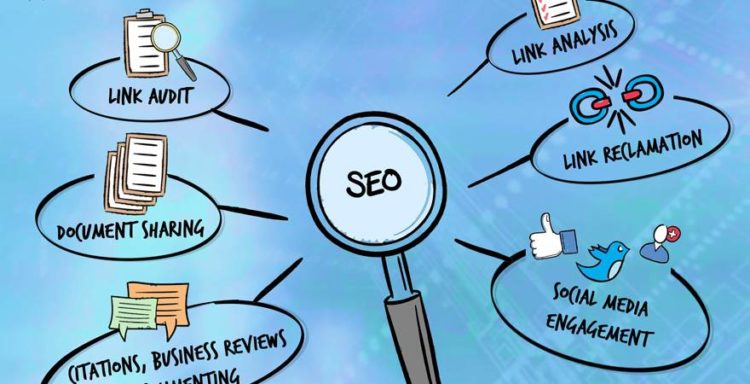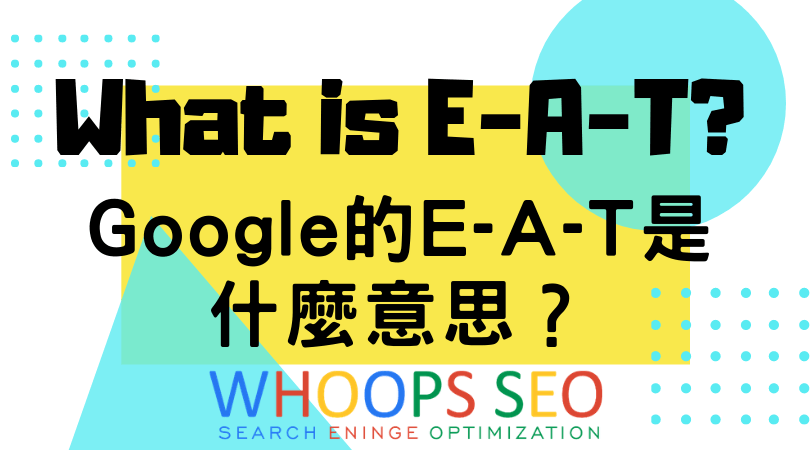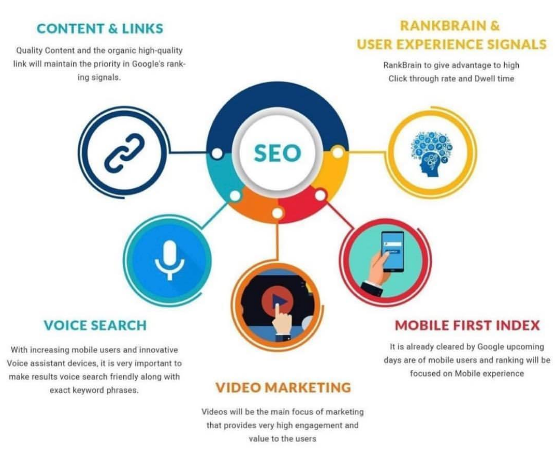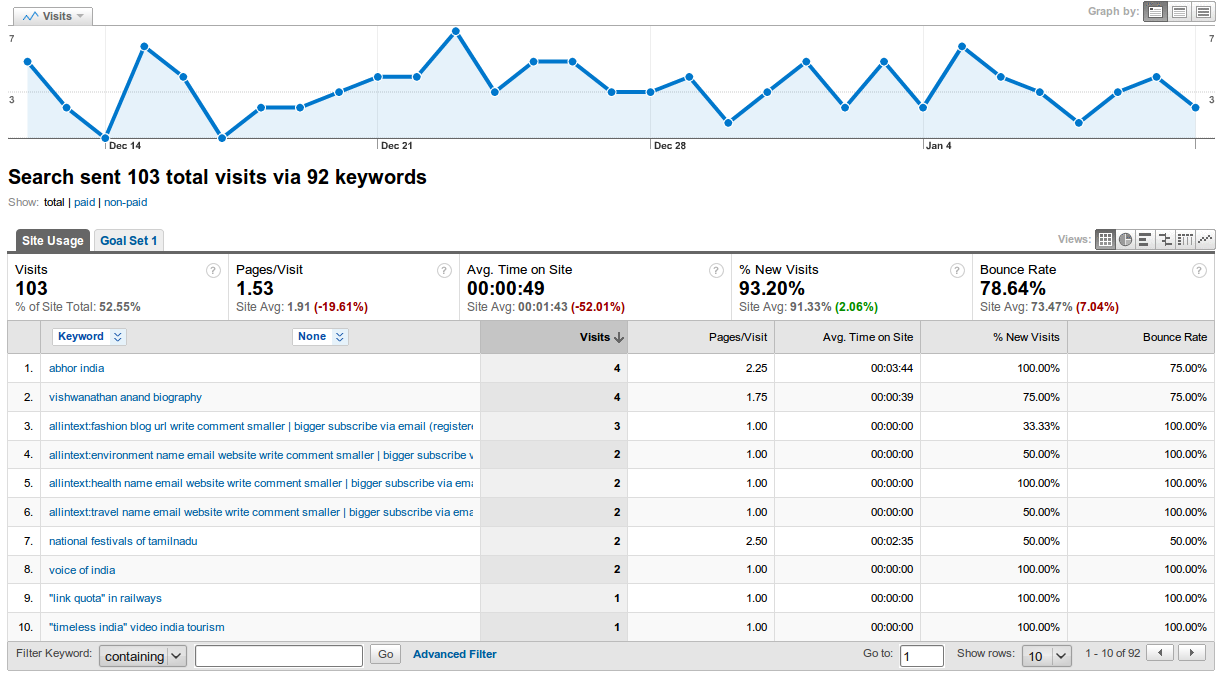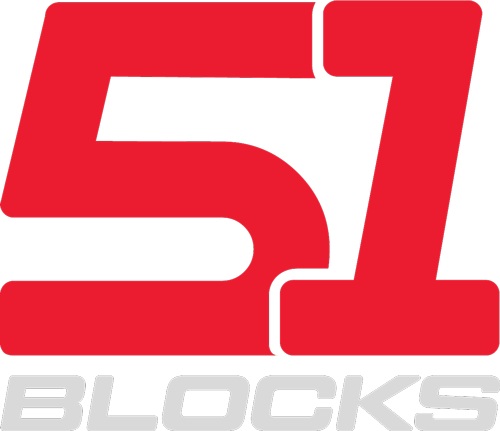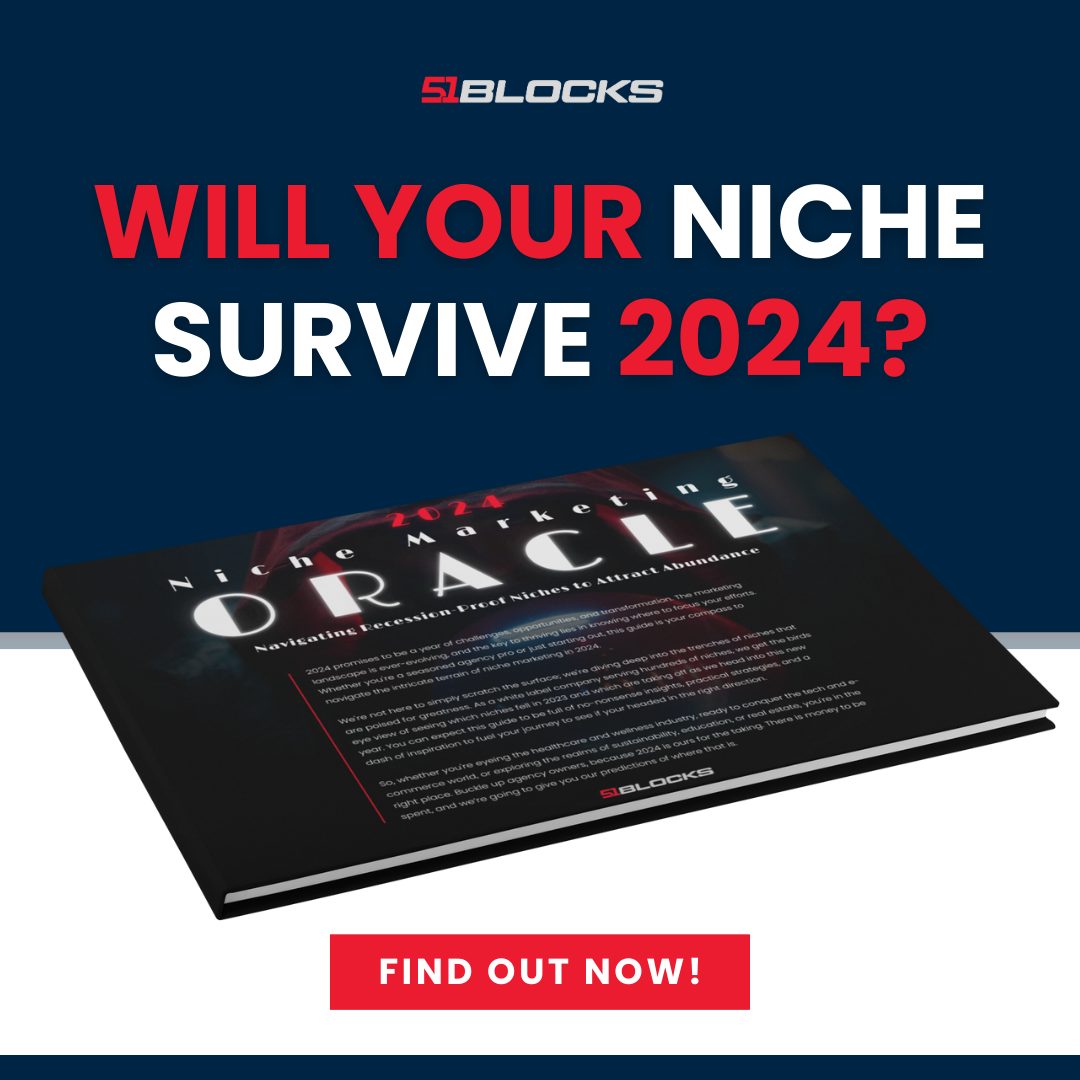
SEO Basics and How to Lay Your Foundation
The first rule of SEO is to understand its basics. Thankfully, doing so is simpler than it seems at first glance. It doesn’t ask you to move mountains in your SEO search process. It doesn’t need you to crack complex codes on your mobile devices. It doesn’t require you to fight your way through algorithms to create rare landing pages.
Why? Because contrary to what some SEO providers might say to grab your attention, SEO is not about tricking the search engines.
It is about understanding them.
By learning what search engines want and look for in a site, you can get a firm grasp over SEO basics in no time, and be perfectly optimized for search engines.
In this brief guide to SEO in 2021, see what you need to know on getting started with a comprehensive SEO campaign.
Let’s start with the first step of understanding search engines.
Search Engines Have to Read a Site to Understand It
Search engines cannot see a site the way human users can. Instead, they need to read through textual and technical clues to understand what a site and its pieces of content are all about.
If your site contains essential information, technical elements, and proper web references in place, search engines can comprehend its relevance to your chosen keywords. When combined with other activities, this allows you to climb up the ranks of the Search Engine Results Pages (SERPs).
On-page SEO and Off-page SEO
SEO is segmented into the following two categories:
- On-page SEO
– This refers to the on-site optimization of content and other technical elements. - Off-page SEO
– This refers to building a network of resources, online properties, and links across the web.
When you are aiming to build an online presence for your site, you need a holistic strategy that takes both on-page and off-page SEO into account.
What Elements Does On-page SEO Include?
On-page SEO is all about optimizing your website for the search engines. It is also the first phase of any competent SEO strategy.
On-page SEO activities usually includes:
- Keyword research. The first, yet most critical step, is finding relevant search phrases.
- Meta title and description setup. This includes creating backend content, which is referenced by the search engines.
- Site structure optimization. This aspect takes care of factors such as page speed, mobile-friendly design, schema markup, page structure, URL structure, as well as crawling and indexing.
- Search engine tools setup. This focuses on setting up and verifying essential accounts, such as Google Search Console, Google Analytics, and Bing Webmaster Tools.
What Elements Does Off-page SEO Include?
Off-page SEO is about setting up your website’s online presence beyond its own URL, to further your Google SEO. It takes care of various aspects that allow you to expand your website’s outreach. The more authority your website gains through these off-page activities, the higher it can rank on the SERPs (Search Engine Results Pages).
Off-page SEO activities usually includes:
- Link building. This refers to the activity of building your site’s network of links through blog posts, content distribution, third-party platforms, and targeted outreach activities.
- Social media activities. When used the right way, social media platforms can significantly contribute to your brand’s identity and visibility. By using different social media outlets, you can boost your overall online presence with the social signal’s algorithm.
- Brand optimization. Apart from social media, focusing on optimizing your brand through other platforms, goes a long way in enhancing your web presence. It also makes way for user-generated content such as customer reviews.
After getting this quick understanding of on-page and off-page SEO basics, moving forward with implementing a beneficial SEO strategy gets that much easier.
But before you do that, it’s critical to keep the following points in mind to ensure best practices and enhance search traffic for your web pages.
- Focus on high quality content. It is critical to stay away from copied or plagiarized content in your blog posts. Instead, add high quality content to your website, as well as in any promotional media that you create.
- There is no such thing as overnight ranking. SEO needs time to build momentum. It simply cannot deliver overnight success or front-page rankings within a few days. Depending on your industry, it can take a few months to see front-page rankings.
- Stay away from guaranteed rankings. While certain actions put you on the right path to obtain higher rankings, no one can guarantee your specific position on the SERPs. Make sure that you steer clear of any provider that promises otherwise.
- Focus on the big picture. It can be difficult to continue investing into something that yields its full benefits after a few months of hard work. Reminding yourself that SEO is a marathon and not a sprint, helps you maintain your focus on its long-term benefits.
- Don’t build links for the sake of it. Quality rules supreme through every aspect of SEO. This also holds for link building activities. Make sure that you only use high quality platforms and reliable strategies for link acquisition. This provides you with maximum benefits and prevents any association with low-quality websites.
These simple best practices with the right SEO tools will help to increase the value of your website while generating more organic search traffic. Organic traffic means that you are fully aligned with search queries in the market. Finally, it also means that you understand what consumers want while being in-tune with Google and other search engines.
Remember that SEO is valuable, and patience pays within this domain.
The Algorithms and Optimizations for
E-A-T and YMYL
SEO doesn’t have a set formula for success. Instead, it has several factors that come together for improving the online presence of a website.
Recently, the utilization of E-A-T and YMYL methods has exploded throughout the web. It is for good reason too. These approaches and best practices not only help you find a defined path to your online presence but also provide significant results.
To help you benefit and use them to your advantage, here’s a simple breakdown on both of these ‘need-to-know’ concepts.
What is E-A-T and How It Should Be Used for SEO?
The Expertise, Authoritativeness, and Trustworthiness (E-A-T) of a website, plays a major role in defining its status to the search engines.
The higher the E-A-T of a website, the better chances it has of ranking higher in the SERPs. This combined ranking factor is nothing new. It has actually been at work for a while, but it has gained newfound prominence with Google’s increased focus on the relevancy and quality of search results. It has also been included in Google’s Search Quality Evaluator Guidelines, which gives it even more credibility as a ranking signal.
Google’s SEO guide titled “How Search Works” also explicitly mentions that the search engine now prioritizes reliable sources while deciding the authority of a website. This means that in order to gain maximum exposure on the SERPs, you have to actively work towards enhancing your website’s E-A-T.
Here’s how you can do that:
Get Your Content Written by Experts
Consistently adding fresh content to your site is an extremely important part of any SEO strategy. The right piece of content adds value to your audience and genuinely makes a difference… then a carefully planned content deployment strategy has become more important than ever.
By having your website’s blog post content written by experts in your respective field, you can boost your website’s expertise, authoritativeness, and trustworthiness exponentially.
For instance, if you are publishing a health-related blog post, you should have it drafted by a healthcare professional who has sufficient credentials of their own. This would let your content take priority over those pieces that are created by generic writers.
This also holds true for every other field, even those which seem too superficial at first glance. For example, Google specifically mentions that the E-A-T factor even applies to gossip websites. This means, that regardless of the topic of the content you create, it should come from a source that is known as an expert in their field.
By having credible professionals contribute to your website, you can gain a significant push on rankings through your E-A-T.
Content marketing requires a specific strategy and proper coordination with different parties to bring about the best results. The content marketing practices of yesteryear won’t hold as much value if you are not working in concert with the new search engine optimization protocols.
Have Accurate Information Available Across the Board
In order to have a higher E-A-T, make sure that you are keeping your website’s information consistent and factual. This includes putting out as much information about your website as possible, while also keeping it relevant to your niche.
For instance, in order to tell your audience about your business, you can create a detailed “About” page on your site.
You should also make sure to showcase a consistent name, address, and phone number (NAP) information on your site, as well as third-party platforms.
Why? Because Google’s E-A-T doesn’t exclusively come from on-site SEO. It also factors in your off-site activities. This also includes the information you spread through third-party platforms.
If the information is transparent and factual, you are able to enhance your E-A-T. But if there’s any ambiguity or difference in the information you have on your site and a third-party platform, Google gives priority to the other website, if it looks like it has a higher authority than yours.
Get Links from Authoritative Platforms
Building your links on third-party websites isn’t limited to proving the accuracy of your published information. It is also about gaining prominence in rankings through citations by prominent websites. For instance, if you get mentioned in a post by a highly authoritative website, it contributes to your E-A-T.
Similarly, if you distribute your content on relevant and credible websites, it also enhances your web presence. Conversely, if you don’t have any citations to point to, or get your appropriate anchor text links, then you integrate content marketing in low quality platforms, it will have a negative effect on your E-A-T.
As explained earlier, this is something that has been in effect for a long time, but it is getting more attention now, due to an increased and well-needed focus on the quality of a website’s referrals.
Keeping this in mind, make sure that you actively build citations through quality platforms. Then as you expand your network of links through these platforms, it would start reflecting on your overall visibility.
What is YMYL (Your Money Your Life) and How It Should Be Used for SEO?
The acronym YMYL, which stands for “Your Money Your Life”, has gained significant popularity over the past year.
Simply put, YMYL is Google’s classification of websites that sell products or services that affect someone’s health, wellness, finances, and general safety.
Since these web pages have the ability to affect a person’s life, Google pays the utmost attention to how it ranks these platforms.
The search engine also ensures that the web pages it shows to its users are factual, helpful, and intended to enhance their overall well-being. If there are any results with keyword rich content that seems dubious, or holds affiliations with links that come from low quality websites, it can affect your ranking.
This doesn’t mean that running a YMYL website or business, could keep you from achieving first page rankings. The keyword rankings are still there for you to obtain through high quality keyword rich content, and trustworthy citations. It is just a bit trickier to obtain them.
You can still enhance your overall web presence, and gain higher rankings with YMYL by keeping a few straightforward points in mind.
How Can You Achieve Higher Rankings in YMYL?
When you operate a business that can be classified as a YMYL website, you need to make sure that you are keeping transparency and user safety in mind.
For instance, if you are offering legal services, ensure that you are giving highly qualified advice, and your site would become a place for helping your users. If you focus on your content to become too keyword-heavy and less-focused on substance, it can backfire and negatively affect your rankings.
On the other hand, if your content is helpful and relevant to your chosen search terms, it can contribute towards enhancing your overall visibility. You can also use a target keyword or two to ensure safety and legitimacy while staying in line with search engine crawlers.
The key is to make your users feel satisfied with the results they were shown through Google.
Pay Extensive Attention to Your Main Content
Here, you need to pay critical attention to your main content (MC), which needs to be highly relevant for your chosen search keyword terms. If there is little to no MC on a page, or if it is filled with visual media rather than helpful target keyword content, it can have a negative effect on your website.
To make sure that you are adhering to strict YMYL standards, craft your MC for the purpose of being helpful to your website’s visitors.
As a rule of thumb, your MC should not only be relevant to your chosen keywords, but it should also have a helpful title that relates to your keywords. Additionally, you should show your company, or personal brand’s information in association with your MC. This establishes your ownership of the website and the content that you are pushing through it. This provides more value with search engine crawlers.
The Rise of Visual, Video and Voice Search
The early days of search engines were quite simple. It was a time that revolved around text-based searches. But with the advancement in technology, and the boost in mobile device usage, this is all changing.
Now, you are able to search for relevant content through visual, video, and voice search
What is Visual Search?
Visual search mainly refers to searching for content through images. While it usually uses images sourced from the internet, it also applies to images taken from your own camera.
Doing a search using images has been in practice for a long time. However, performing a search through your own camera has taken off quite recently. Much of the credit goes to the increased usage of mobile devices, and some goes to specialized apps such as Google Lens, which recently completed the milestone of going past 1 billion searches.
The interesting part? Visual search is not limited to images either. Programs such as Google Lens, now allows users to scan documents, read menus, and transcribe handwriting. From there, it gets incredibly easy to search for exactly what you are looking for on the web. And you can do all of this, and more without typing in a single keyword into the search bar.
The MC on your website can be optimized for these searches through the usage of proper keywords, fresh content, and higher site authority. Similarly, your images can be made more search engine friendly, by using alt tags and proper text descriptors. Your images should also have a prominent place on your website, such as at the top of the web page.
When optimizing your website, you need to keep these in mind and make your MC, as well as the images on your website, more accessible for search engines.
Because Google Lens uses information from various web properties, you should also keep these details in mind while making NAP profiles. The right data and information can help your third-party profiles shine through, but inconsistent details can stagger your progress.
Since visual search is only projected to gain more traction as visual data increases, paying attention to these new data aspects is incredibly important.
What is Video Search?
Video search is an even more novel concept than visual search, but it is just as important; both in terms of its functionality and its popularity.
Unlike visual search, video search doesn’t mean that someone could upload a video and search for a match against its content. It actually refers to the opposite mechanism. As such, video search refers to someone finding your video content through their entered keywords.
Until a few years ago, this particular data concept was limited to dedicated video platforms such as YouTube and Vimeo. But now, it is a widely popular practice to find your desired videos through a simple Google search. It works the same way as a simple search keyword query, but these searches often return the results of a YouTube video instead of a web page.
Even when someone is searching without the intention of finding a video, an ideal keyword optimized video from YouTube can show up in the SERPs. With the relatively recent introduction of video snippets, such videos can often become the first and most prominent result in search results.
So how do you achieve this spot?
It’s easy.
You just need to optimize your video for the right keyword data while uploading it on a platform such as YouTube. This once again relates highly to keywords. But instead of overusing them, you need to put relevance as the main point. This can also help specific sections in your video to rank on top of search results.
For instance, if your video is about putting together a gaming PC, you can segment it into different sections or “Chapters” while uploading it to YouTube. This can include choosing components, checking their price, ordering the hardware, and then finally assembling it all together.
When someone searches for related information about ‘how to build a gaming PC?’ Your video can show up on the featured snippet section, with a timestamp that begins at the last chapter of your video.
Sounds neat? We think so too.
There is no shortcut to getting your videos ranked on top of search results, but optimizing your videos properly can help you get noticed by search engines.
Remember that the right data matters in each aspect of your site.
The following points can help your video become a featured snippet on Google:
- Use the right keywords. Make sure to utilize proper keyword phrases in your video title, title tags, description, and meta tags.
- Sort videos into chapters. You can easily label and segment your videos into smaller clips. This doesn’t affect your video file but makes it readable for search engines.
- Use subtitles. Subtitles, transcripts, or closed captions by YouTube, helps your video become accessible to everyone. They also help search engines learn more about the video.
In addition to creating the right optimization, one must also make sure that the videos you are producing has relevant and high-quality content in it. Sure, optimization in title tags and meta tags is essential, but users must appreciate your content for it to help you in the long run.
What is Voice Search?
This is probably the most straightforward, and one of the most talked about aspects of media-related searches. Simply put, voice search refers to a search engine query that is generated by speech than conventionally typing your keywords into a search engine. This particular search is usually executed through handheld devices such as smartphones and tablets, but it can also be used on desktops and laptops.
Apart from adding an air of accessibility, this also supports digital tools such as smart assistants; including but not limited to: Apple Siri, Google Assistant, and Amazon Alexa.
Keyword Research and Search Intent Optimizations
With all the emphasis on finding the right keywords, it’s more than clear that they play a critical role in SEO. But exactly how do you find the right keyword phrases to target? What type of search phrases can help you get the SEO benefits you need? And what type of keywords actually translates to real world advantage?
Fortunately, the answer is not that complex.
Keyword Research
Typical keyword research for an SEO campaign starts from keywords that are most relevant to your business, organization, or website. As the foundational step, you can come up with basic keywords that relate to your industry. For instance, if you run a graphic design business, your keywords can center around “graphic design” and any related services that fall under the category. You can then enter these keywords into SEO tools like the Google Keyword Planner, to see what other people are searching for in relation to those phrases.
You can also look at other overlooked keyword tools or methods like Google Autocomplete results, to see how popular your chosen keywords are, as you conduct your search. There will be search phrases at the bottom of the page that are suggested by Google as being relevant to your keywords.
But the search for the right keywords doesn’t stop there. You can also move forward with searching for relevant keywords on your competitors’ websites.
This ensures that you are getting an idea of what kind of keywords to target according to what your competitors are investing in. You can also fetch keywords from terms that are being targeted on pay-per-click (PPC) ads by your competitors, or in your own PPC campaign. This practice lets you find keywords that are highly sought after by your industry, to the point where everyone actively buys them.
While searching for these keywords, you can also segment them through your service location. This is especially relevant for those businesses whose services are geographically restricted. This includes but is not limited to local contractors, repair specialists, and hardware providers.
Considering the given information, you can put together a list of highly relevant keywords and search phrases to reach out to your target audience. You can then further optimize this collection of keywords with factors such as search intent.
Remember to utilize keyword tools that are most relevant for your processes, as they can yield the right keyword and holistic data points to help you optimize your campaign. The right efforts in this regard will lead to proper page URL search results, and these page URL search results can lead to massive success over time.
Search Intent and How to Use It
As the term suggests, search intent simply refers to the intention behind a search query. In terms of SEO, this phrase is used to identify the purpose of an online search or the intent of the search query.
Across the web, a vast amount of people searches for a myriad of things on a daily basis. Some do it for information on certain topics, while others do it to buy specific products.
Labeling all search intents can be tricky, but almost all search engine experts would agree that categorizing them into three segments, should cover all typical search queries.
The categories are:
- Information intent. This refers to people who search for information on the web. Keywords like “how to,” “where can I,” and “where to” are commonly added to search phrases.
- Location-based Intent. This refers to location-based services that are delivered in person. “Near me” and “location name” are often added to these search terms.
- Transactional Intent. This applies to search queries that are done with the intention to buy products or services. Keywords such as “buy,” “discounted,” and “deal” are often used in this intent.
Depending upon your business or website’s model of operation, you should target people whose intent matches what you have to offer.
For instance, if you sell a specific product, you can target keywords such as “get” and “discount” along with your product name. If you want to narrow down your search further, you can add your respective “area” to it as well. On the other hand, if you want to target an audience that’s simply looking for information, you can move forward with phrases such as “how to” with your associated topic.
Identifying this intent lets you enhance your focus on valuable keywords, reach out to a more relevant audience, and attract visitors who would find your website to be a perfect match for their needs.
Learning about search intent and using it effectively brings various benefits to the table.
- It improves your conversion rate.
- It reduces your site’s overall bounce rate.
- It increases your site’s relevance to its target phrases.
While enhancing your conversion rate helps you get more return on investment (ROI) and get more out of your efforts, decreasing your bounce rate also goes a long way.
Among other search factors, a low bounce rate indicates a positive user experience. This shows the search engines, that your site is a quality platform that fulfills its visitors’ requirements; left, right, and center.
You can get the most out of your search intent by looking into the following factors:
- Create new content with preferred search intent in mind.
- Optimize your web copy with keywords that show search intent.
- Always show relevant information to users against their preferred keyword.
- Optimize your site for mobile devices, as mobile device searches and web navigation is more prevalent.
However, using search intent requires you to be careful. Instead of filling all of your keywords with the addition of intent-based words, you should only choose those phrases that have a high ROI. This ensures that you can target a wide variety of search results that don’t occupy your whole SEO strategy.
How to Formulate Your SEO Strategy
Speaking of SEO strategy, it is critical that you formulate it in a careful way. From selecting your keywords to crafting your content… you must consider all relevant aspects that can affect your rankings and traffic.
Determining your campaign’s short-term goals, long-term intent, and overall outreach objectives, helps you ensure that you can get the most out of your efforts. This data is relevant to your business because it helps you to move forward in the right manner. It helps you understand what you want and what you don’t want in your results. Further, it helps you to optimize for the best practices while pursuing specific goals.
By taking care of all primary factors, while also paying attention to secondary segments, you can drive up your ROI and run an optimal SEO campaign.
3 SEO Strategy Steps
There are various steps to an SEO strategy, with their priorities fluctuating upon your industry.
For instance, if you run an information-based website, then you may not need to set up many location-based profiles. But if you have a brick-and-mortar store, you need to put more focus on your NAP information.
Regardless of the type of industry you operate in, from data services to cloud computing, the following 3 strategy tips are critical to building a successful SEO campaign.
1. Build a Mind Map
Building mind maps is a quite popular corporate and strategic tool that helps you put all your ideas in a single site. It links different ideas together and lets you refine your respective search queries. As you conduct this mental link building you can map ideas and obtain more clarity.
The first step is to utilize a mind map and follow simple instructions.
From there, it makes it easier to discard redundant thoughts and optimize beneficial ideas.
Apart from visualizing your thoughts, creating a mind map helps you in reaching breakthroughs in your plans.
It helps you collate the right data to find clarity in your actions.
While creating a mind map may seem like only an additional step at first, it is quite a critical tool in something as expansive as SEO.
By putting down all your thoughts and advertising ideas into a single place, you can create holistic strategies that pay attention to all crucial aspects.
In addition to creating your campaign from scratch, this step also helps you revisit your plans a few months down the line.
This means that you never have to waste a good idea only because you didn’t have the resources or outreach for it at a particular time.
Remember that it truly helps to take this first step in strategy as it can help you have peace of mind as you set up landing pages, improve search traffic, and build out the right content that matters. Further, you can have the right data to move forward.
2. Create a Visual Plan
Mind maps are a great strategizing and reference guide for yourself and your team. But once you are past the planning phase, presenting your mind map in place of a concrete strategy is nothing short of going on a rambling episode when asked to give a keynote speech. That’s why it’s critical that you have a coherent and clear plan in place that explains exactly what elements your final SEO strategy contains.
This plan should include critical elements including but not limited to:
- Your keywords.
- Your on-page plan.
- Your content creation strategy.
- Your projected backlink portfolio.
- Your target audience profile.
- Your target traffic goals.
- Your target outreach objectives.
Setting up these objectives will help you craft a clear path to your SEO objectives.
Even if you aren’t able to touch your traffic or outreach deadlines due to SEO’s unpredictable nature, having them in place gives you a coherent idea of where you want to be.
Apart from providing you with a clear picture of your SEO goals, this also helps you delegate your task to existing and new members of your team. When everyone has a transparent idea of what they need to be, your SEO campaign can create a guide to execute like a well-oiled machine.
3. Understand Your Business Model Inside and Out
In order to create a compelling SEO strategy, you must devise a plan that is highly relevant to your website and its related properties. You can’t achieve that goal without having a deep understanding of your business model.
No matter if you run an informative website that has a list of links, or a creative eCommerce store, you need to have an unmistakable idea of what your brand is, where it stands at the moment, and which goals it needs to reach in the future.
Tracking, Monitoring & Analysis
The only way to succeed in this digital landscape is by vision, execution, and measurement.
Now, measurement is not necessarily the most fun part of any digital marketing campaign, but the truth is that it is necessary for improvement purposes. If you don’t measure it, you don’t improve it, and if you don’t improve it, you merely stand still.
That’s no fun at all.
That is why effective search engine optimization managers will ensure monitoring, tracking, and analyzing the right key performance indicators in the execution and refinement of the search engine optimization campaign.
These professionals can get really intensive by checking the level of conversions, to active and dead links, to other relevant factors to improve the quality of the SEO campaign. Recall that you can see progress, more success, and obtain more learnings if you measure and monitor your growth. Crucially, it helps to understand what is working and what is not, enabling you to focus on generating value while trimming what isn’t.
How should you approach this process?
1. Begin with your Goal(s)
It is best not to have several objectives in mind in this regard as you want to focus on one objective that will have the most impact on your business or campaign. Focusing on one goal enables you to prioritize what matters for your website and your current needs. As such, you must have the right inquiries into the nature of your business, and the path that you will take as you move forward.
The primary objective is to raise revenues by increasing your visibility, quantifying your potential customers’ value, and assessing your marketing spend. The critical point here is that you want to ask deep questions about the business you are planning on growing over the long term.
For many, this is an unstated rule, but you must make sure that it is measurable, specific, and obtainable when you are setting a goal.
Remember that you can track and improve your goals to ensure its progress if it is measurable. it is specific, then you know what you are shooting for in the first place. Finally, if you feel that it is obtainable, you will make progress each day to meet your goal.
Again, for some, this is the foundation of goal setting, but for others, this vital point can change the way they approach their campaigns.
Now that we have the essentials out of the way let’s talk about key metrics and other components.
2. Engagement
As a digital marketer, you are looking for engagement. Remember that engagement in some form or fashion, helps to show potential and the need for investment. But what are you optimizing for in your engagement?
You are looking at site visits, duration of the stay, clicks on your site, and the number of conversions on your site. Your engagement stages and levels will depend on several aspects, but they revolve around trust, time in business, your match in your industry, the industry, and the quality of the offer.
It is never easy when you start and seek to build traction by reaching your specific audience. But once you establish a process, you can increase your momentum and be on the right track.
Let’s view the most common metrics and then go from there.
3. The Bounce Rate
Bounced visits let you know that a visitor landed on your site, on a specific page, and then clicked away from that page, back to the search or another website. The bounce rate doesn’t really tell you as much as you think it does. For instance, the person may have landed on your site randomly looking for another site.
People might bounce because they are lost on your page. You would rather know how long people are navigating your page to notice your content.
The critical question is are they finding what they are looking for?
4. Duration on Your Specific Page
If people are spending an appropriate amount of time on your page, then you are on the right track. That means that they are aware of your page and are interested enough to visit your page and engage with you.
Further, they’ve taken the first action of clicking through to your site; second, are they impressed by what they see? Does it relate to what they want? That is what page duration measures, and that is why it is an important measurement.
Conversely, think about which page they are on and how that factors into the duration of their visit. For instance, a few pages don’t require extended stays, while an expansive blog will require quite a bit of time.
5. Page Navigation Depth
You may be able to glean more information by finding out how they are navigating each page. For instance, are they navigating from the top of the page to the end of the page so they can get as much information as possible? Are you providing the most relevant content at the start of the page or the bottom of the page? How are you structuring your site and pages?
But how could you find out?
Thankfully, you can view user behavior in Google Analytics.
6. The Number of Pages That They Frequent
How many pages are they looking at when they visit your site? This metric only matters if you require the visitor to go through each page and progress to the end goal. But if you have pages that are separate from each other, then it may not require people to interact with all of them to complete a task.
7. Conversions
Conversions are those users that meet that specific goal. For instance, you want to make it to where users click on your link and sign up for your newsletter. You can notice the rate of conversions by looking at the number of people who clicked on your link and signed up over the total number of people that visited your site.
You want traffic and awareness at the top of the funnel, and then you want to ensure that the traffic is flowing through to your desired goal.
These are the all-time essentials and serve as a refresher. Let’s take a look at what to inspect throughout the coming year keenly.
The SEO KPIs You Should Be Looking at
We want to talk about one key technical aspect before focusing on interactions with your audience.
Page Load Speed
Your page load time is a crucial part of your user experience. It enables you to do right by your users, and gives you additional points with Google and other search engines, triggering the 2nd most important ranking factor algorithm.
See, if you have your technical site architecture humming along correctly, and you are making sure to provide the best navigation experience through aspects such as page load time, you set the foundations for success.
Website users feel entitled to the best experience while browsing, and slow page load times can lead to higher bounce rates. That is why you will strive to improve your site regularly to enable it to convey the right information while keeping it lean and agile.
The core point here is that you want to keep your page load time under three seconds.
Remember that optimal page load times lead to great first impressions, improved interactions, and likely more conversions.
Crawl Perfection
Crawling is another element that has to do with your technical site architecture.
If search engine crawlers cannot access and understand your site content while they conduct their due diligence, you will not make as much progress as you would like in attracting users. These crawlers scurry around the web and make judgments on relevance and value to users. The more relevant and useful, the higher the site appears in the eyes of the search engine.
Thankfully, you can assess for crawl errors within your Google Search Console and do something about these unfortunate errors. Take a second and assess crawlability via the fetch and render button within the Google Search Console. You may notice that the crawl error originates from various places, then you could deal with these problems one by one.
Comb through server issues to URL issues to minimize your crawl errors and let these crawlers freely access and move through your site.
Crawl perfection brings about technical peace of mind.
Organic Sessions
A compelling key performance indicator metric is organic sessions. This key performance indicator dives into the simple idea of search engine-oriented sessions.
What does that mean?
How many people are coming to your site through the current dominant search engines?
It is an essential SEO metric as it enables you to measure the value of your search engine campaign progress genuinely. We can never rule out the value of optimizing for search engines, but we can change our efforts to obtain better results. You should note here that you can define a session as a simple visit, and the user’s behaviors on your website. For instance, did the user click around the website? Did they read through it? What else did they do? All of these actions and behaviors are part of a single session before they leave. When they leave, the session will close. As such, a user may begin several sessions on your site.
Thankfully, Google Analytics empowers you to note organic traffic.
We value organic traffic through search engines because we understand that this is the foundation of your business relevance. Remember that organic traffic represents a great deal of work, and as it rises, it shows the pay off in the SEO work done to be in line with Google and other search engines. But even more so, it shows that you are reaching your audience in a few keyword positions as well. That is something that you want to pay close attention to because it can mean an increase in brand-oriented searches and an increase in the knowledge of your brand. An increase in brand awareness leads to more searches of your products, enabling you to see and discover more about the customer journey.
What’s fantastic here is that as more people come to your site and signal that they are interested and trust you, the higher you will start to rank. It happens because you did the work, and you continue to do work to please your audience. The higher the engagement, the more people you can expect to click through to your site. It is a cycle that pays off over time and continues to turn in your favor if you continuously do the work.
Improving your organic sessions means that you are becoming more relevant to your users and the search engines and is the whole point of the search engine optimization process. Of course, there are a variety of activities that you can do to encourage growth, but one primary activity remains regular search engine optimization and data-driven actions.
This leads to keyword rankings.
Keyword Rankings
What should you pay attention to when thinking about keyword rankings? Where are the opportunities, and what should your priorities be? These are what you should be thinking about in this process.
For instance, there are several layers of high-volume keywords that face different levels of competition. You want to start gaining traction, and want to compete for the best type of keywords for your situation to gain relevance, and build your brand in a very noisy world.
The Generation of Leads
Great, you have the foundations in order and are working on the right keywords and attracting the right kind of audience to your site. That is terrific.
…But how many people are going from mere browser or digital window shoppers to regular buyers?
You can witness this in your lead list, is it growing, or is it stabilizing and stagnant? The core idea of search engine optimization and increasing your visibility is to improve your business overall by generating sales.
What is intriguing is that the right tools (Google Analytics) can help you navigate through the process and see how users were moving through the site, to move through to a lead or conversion.
Remember you also want to have clear calls to action at the right places through your site, so people will, indeed, take action.
These seem like simple KPI’s but these will continue to lead the way from the start of the buyer’s journey all the way through to the end in forming a relationship with you.
How to Monitor for Errors in SEO to Fix Rankings
Yes, the world of SEO is tumultuous and has its share of winds and storms. You may, even, at times, come out with a few losses.
For instance, you might notice that you are getting a few penalties that search engines levy on you due to your aggressive SEO, inappropriate SEO behavior, and unpleasant actions.
If you find yourself with such a problem, what are you to do?
You cannot merely sit there and hope to return back to normal and hope to find yourself in the search engine’s good grace. Thankfully, there is a road to redemption in SEO land.
Let’s talk about where you are and where you hope to be in this process.
The Aftermath
Experts note that you can find yourself in these proverbial circles of SEO hell when you wake up one day, and notice that your rankings have sunk into the abyss. These rankings were once at the upper echelon level. Now, almost as if at the whim of the algorithms, one finds their rankings at the most precarious places in the SERPs. That is surely something that can get the adrenaline going for any ambitious and hardworking SEO professional.
It is hard to obtain starry heights, and then suddenly find yourself at SEO rock bottom. You go from having a steady and respectable flow of organic traffic, to experiencing what can only be described as low flow. Of course, it is entirely possible that you are seeing a warning signal within your Google Search Console itself.
If you receive a message within your Google Search Console, you are in receipt of a manual penalty. That means you were able to draw the eye of a watchful representative at Google, who glanced at your burgeoning ambitious site, and chose to levy a penalty.
You will notice that the error will fall under that of a sitewide link issue, partial link issues, and thin content issues.
What should you do to rectify this issue?
- Hone in on the specific problem link or set of links.
- Eliminate, replace, and fix them.
- Appeal to Google with a Reconsideration Request to improve your position.
It is not a quick road back to redemption, but it is possible. Then you can fall into the problem of algorithmic penalties.
The Algorithm Penalty
These are more automated penalties that arise when Google notices sites that do not fit specific criteria. Google will automatically judge and levy punishment on your site by lowering your rankings.
We are aware of several algorithmic processes that include Panda, Penguin, Search Quality, and others, focusing on excess ads and sites similar to shark loans.
These are dispassionate algorithms that carry on, and merely do what they are programmed to do, respond in some way to pernicious activity.
Once again, you will find yourself in a proverbial ranking abyss. The steps are the same as noted above, except for the appeal.
You must find out what the problem is and fix it as quickly as possible.
Professionals will spend time and figure out what the problem might be. They might check if a new algorithm or update is in place and see if they can cater to its new changes.
Tread with Caution
Links are a fundamental part of the Google search engine process. It makes quite a bit of sense for a wide range of reasons. We can go into these many reasons or simplify it by saying that it revolves around information and user experience.
Google aims to bring about harmony in the entire user experience for advertisers, information consumers, and information providers. It is this harmony that compels people to utilize Google regularly. That is why it has strict link connection guidelines. It encourages organic link connections, not trades, swaps, or purchases of link integrations.
Search engines want to encourage harmony in information sharing, creation, and consumption to provide the best experience overall. It seeks to streamline ways to signal importance, relevance, and the best experience to users that may frequent search engines looking for life’s most in-depth queries.
The refining agents at Google seek to prune low-quality systems to create the most relevant experience possible.
Do not engage in paid links, web directory sites, article directory sites, and links that are not editorial in nature.
Further, stay away from global links that do not make any sense in conjunction with your website.
Your best bet is to avoid these practices mentioned above and clean up an issue if you find yourself with a search engine problem.
Here are a few steps to follow to find out what the problem is:
- Create a link list that attaches to your site. You can utilize the Google Search Console to find a great list of links that tie to your site. But you must do a bit more digging with other tools. You may need to use all the more popular tools that you can get to improve your chances of finding all links that tie to your site.
- Remove duplicates.
- Inspect your list of links.
- Note links that seem like they could be the issue.
- Continue with your inspection for each domain.
- Engage with the domains that you would like to disassociate from.
- Obtain a response manually from the domain or utilize Google Disavow.
Quality Content
Do your best to create, link to, and associate with quality content.
What does that mean? Quality content is content that matters to your audience, and can help to push their knowledge forward. It will cater to organic search as you look at keyword research but it will provide information at the right time in the right way.
Google loathes thin content, scraped content, duplicate content, user-oriented content without proper control, or other inappropriate content.
Think about what people are searching for, why, and how they are searching (mobile devices or desktop) in addition to other contextual factors to deliver supreme content.
In essence, practice simplicity, prioritize quality, and deliver fantastic user experiences to stay relevant.
Final Thoughts and Conclusion
2020 was a hectic year and is one that presented a lot of changes in the offline and online world. It was one that helped to bring in more acceleration in the digital world, as was seen with the explosion of visitors on specific sites, web usage, and the tools like Zoom and the like.
That only presents a massive opportunity for those who want to lay down a digital foundation and build a phenomenal digital presence for the next year and the years ahead.
If you seek to stick around for the long-term you must make sure to cover all of your bases, and search engine optimization is crucial regardless of how you look at the digital marketing landscape.
We know that search engine optimization is one of the keys to laying down digital pillars, understanding your audience, reading the data, and positioning yourself according to your readers’ and consumers’ needs and wants.
No one knows precisely what 2021 will bring or the years after that, but one thing is sure, people will have queries. They will turn to search engines to find answers, and search engine optimization will continue to pay significant dividends.
Starting with the foundations and optimizing with current future trends, is a compelling and wise strategy to stay competitive today and for the many tomorrow’s ahead.
That’s why we’re here to make sure that we keep up with the changes present within the SEO landscape, and adapt to them to stay relevant each year.
